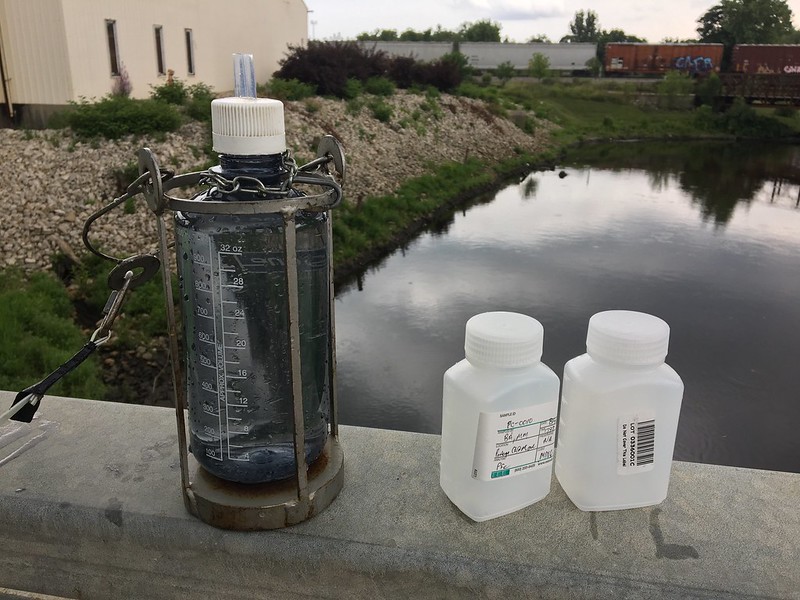
What are the right responses for PFAS?
Currently European and French regulators are imposing ever tighter restrictions on the use of PFAS (polyfluoroalkyl substances). In this context, the CNRS is organising a conference on these fluorinated compounds at its Paris headquarters on March 27th and 28th. This event will be an opportunity to demonstrate how science can detect, degrade and eventually replace PFAS.
The timing couldn't be better. Earlier this month, the European Parliament and the Council of Europe voted to ban per- and polyfluoroalkylated substances (PFAS) from food packaging. On the 27th of March, the French National Assembly's Sustainable Development, Spatial and Regional Planning Committees are debating a bill with similar objectives while the CNRS is organising a conference on the subject on the same day and the 28th of March.
From fantastic properties to 'eternal pollutants'…
Clearly then this class of molecules is very much in the news and with good reason. Cyrille Isaac Sibille, the rapporteur for the proposed French law, explains that "in the 2010s and 2020s, international publications became increasingly alarmist, methods for quantifying PFAS became increasingly accurate and analyses multiplied worldwide. Awareness of the issue was raised quickly". And yet, until recently these chemical compounds were more renowned for their intrinsic properties and durability. These qualities derive from their highly stable carbon-fluorine bonds and very low levels of degradability once in the environment which led to their nickname of 'eternal pollutants'. Clearly then, their usage is something of a double-edged sword. Martina Knoop, director of the CNRS's Mission for Transversal and Interdisciplinary Initiatives (MITI), describes PFAS as a family of "molecules that are very stable over time with wonderful properties but they don't degrade and so tend to accumulate in bodies, water and ecosystems". Indeed, a 2019 study conducted by Santé Publique France (French link) highlighted this massive accumulation in bodies, revealing that 100% of the cohort analysed was impregnated with certain perfluorinated compounds.
PFAS are non-stick, waterproof and heat-resistant and have been widely used in a variety of industrial sectors and everyday consumer products since the 1950s. These include textiles, fire-fighting foams, non-stick coatings, cosmetics or phytosanitary products. They are also used in food packaging because of their barrier properties, particularly for fats. The latter issue is of particular concern because ''food is one of the main routes by which humans are contaminated by perfluorinated substances which have been proven to have negative health effects" as Sébastien Lagoutte, the head of chemicals and materials at the CNRS's Business Relations Department (DRE) explains.

Science is searching for alternatives to PFAS
The dangerous nature of these molecules has led to increasingly strict regulations but any ban would mean the economic sectors using them will need to find substitutes or alternatives. Another issue is how to find solutions for the negative effects of existing and dispersed PFAS. Given the issue's importance, the DRE and the MITI are jointly organising the conference 'PFAS: enjeux et alternatifs'Importance, issues and alternatives. to promote interdisciplinary and socio-economic interactions on what is evidently a complex subject. The DRE's director Carole Chrétien describes the event as "innovative and unprecedented because for the first time the CNRS is proposing upstream discussion based on scientific issues identified by its laboratories of a subject with a strong societal impact that is also of great economic and pragmatic importance for companies". The CNRS's scientific expertise means the organisation can position itself as a key stakeholder to accompany its economic partners in making this chemical and industrial transition. Martina Knoop believes "the complexity of the subject of PFAS could not be dealt with by one stakeholder alone. The CNRS's interdisciplinary nature (French link) means it can really play an important role because it works with all the relevant stakeholders at the interface between science and society as a whole. The organisation is capable of identifying the subjects requiring research input early on given the major social and economic issues at stake".
In fact, this conference revealed the full extent to which CNRS scientists are already working on these issues. Following on from an initial conference in 2023 on the pollution caused by PFAS, Martina Knoop has continued to focus on this high-stakes social issue within the MITI she directs, noting the "central place" PFAS occupy in its mission programming: "15 of the 84 projects submitted to our call for pollution and depollution projects (French link) involved PFAS". The DRE and the MITI now aim to bring together fundamental research teams and companies affected by a change in regulations to work together on the issue of PFAS. As well as the increasingly fine-tuned detection of PFAS (French link) in the environment, such research projects are now developing solutions for industry, with scientists increasingly collaborating with companies on the issue. Sébastien Lagoutte gives a few examples. In terms of remediation (capturing PFAS in the environment), the 'Cleaneau' project from the Institut Européen des MembranesCNRS / ENSC Montpellier / Université de Montpellier. was the winner in the RISE programme's 10th promotion and is developing a platform material based on functional cyclic molecules integrated into a network of cross-linked polymers for water treatment purposes. The material's two components can be adapted and readapted to selectively capture different families of pollutants. This material's effectiveness in capturing iodine, PFAS, some heavy metals and gold has been clearly demonstrated.
Sébastien Lagoutte notes that "the changing regulatory context and the need for action to deal with existing pollution" has led to collaborations with industry multiplying. He cites the following examples: the joint research into the sonochemicalSonochemistry is a field of chemistry involving study of the effects of ultrasonic waves on chemical reactions. degradation process carried out by the asbestos removal and soil decontamination company Valgo and the Marcoule Institute in Separation ChemistryCEA / CNRS / ENSC Montpellier / Université de Montpellier.; the joint laboratory (Labcom) ASCI involving the SEB group with its TEFAL brand and the Laboratory of Multimaterials and Interfaces
CNRS / Université Claude-Bernard. set up in 2018; the more recent Labcom supported by the National Research Agency (ANR) involving the Grapheal start-up, specialising in the detection and dosage of chemical and biological compounds, and the EDYTEM laboratory (Environments, Dynamics and Mountain Territories)CNRS / Université Savoie-Mont-Blanc. which is developing rapid digital tests to detect PFAS in the field.
To sum up, as Carole Chrétien points out, "science is also there to find the right solutions for existing problems and to implement them with companies which is why we need to work alongside the socio-economic sphere". One thing is certain. Applications to attend the conference have been such that bookings had to close several days in advance due to lack of places which shows industrialists have clearly understood how the CNRS can support them.


